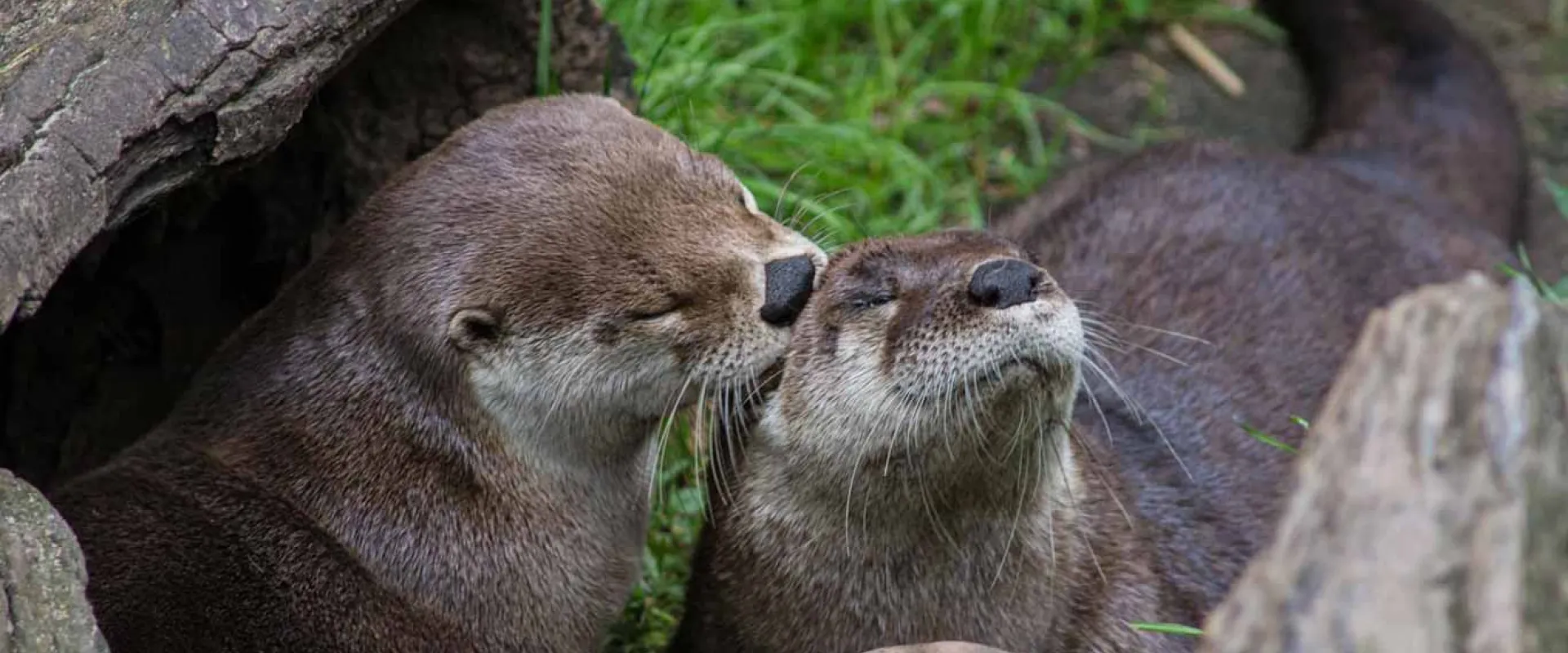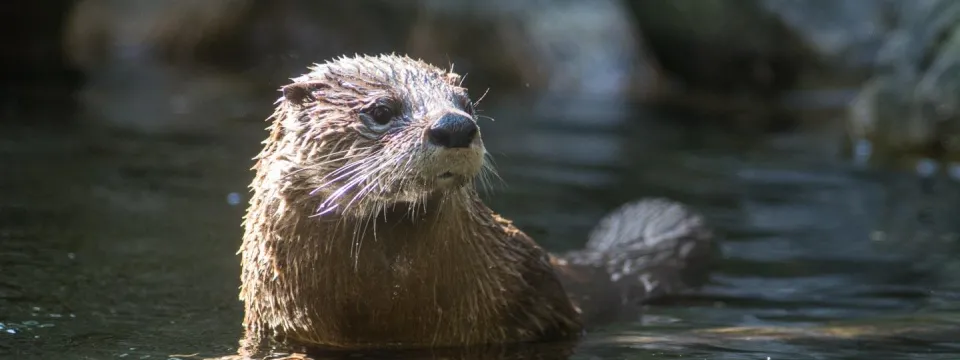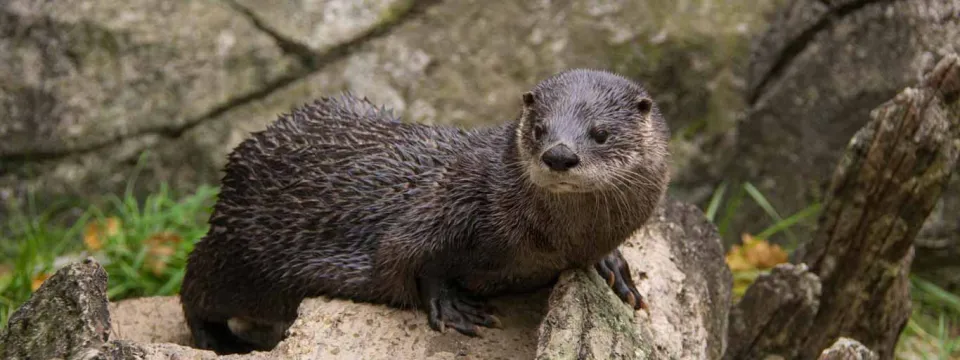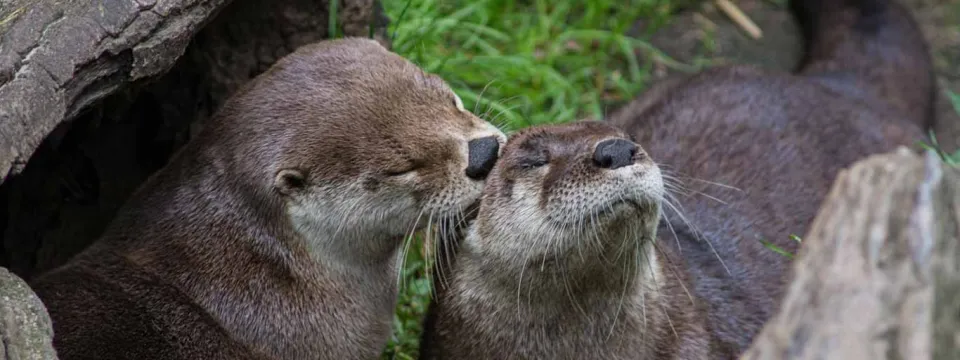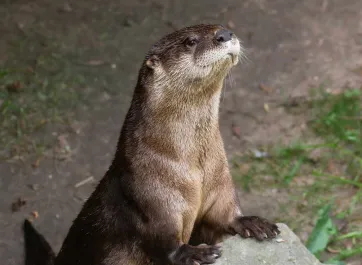Dr. Emily Lynch, Associate Curator of Research
Wouldn’t you say life in quarantine can be a bit dull? But having a friend with you might make all the difference!
Just like us humans, some species prefer the company of others. While some species are solitary (or prefer to be alone), like polar bears and ocelots, others thrive when living in a group, like lemurs and wolves. For zoos, it is of critical importance to consider the social needs of the animals to ensure their well-being. At North Carolina Zoo, we are dedicated to providing naturalistic habitats, and we similarly strive to provide social housings that meets the needs of the species, as well as the individual.
A great example of how this can be accomplished is through the story of our otters.
Two orphaned North American river otters, Hannah (Picture 1) and Bono (Picture 2), were successfully rehabilitated at two different facilities, but were non-releasable.Originally, Bono thrived as a laid back and very calm male and had a successful litter with a previous female. As his current mate aged, an opportunity arose for him to meet Hannah, who was yet to have offspring of her own. This was a result of the Association of Zoos and Aquariums’ Species Survival Program, which helps to ensure the sustainability of zoo animal populations.
These national programs provide guidance on pairing animals, taking into consideration animal genetics and history, so we can have diverse and healthy population across all accredited zoos. So, the Program coordinators, which include scientists and other zoo animal experts, found and recommended Hannah as a good social and breeding match for Bono.
Below:
Picture 1: Hannah
Picture 2: Bono
But with wild animals, just as you might with your dogs or cats at home, introducing them to each other needs to be a slow, carefully planned process. What’s more, we want to understand how the introduction is affecting the animal’s well-being -- time for some research!
First, upon Hannah’s arrival, she and Bono were given the opportunity to acquaint themselves with each other. Katherine Hagen, the Animal Management Supervisor for the otters, described this process as follows: “[Since Hannah’s arrival], Hannah and Bono were provided a couple months of “howdy access”, initially with an empty buffer stall between them, and gradually moved towards howdy access through only a single panel of mesh.” By “howdy access,” she means that Hannah and Bono could see and smell each other before physically sharing a space.
Next, it was time to make the move towards cohabitation! To monitor the effects of this move, NCSU student, Alexandra Hudson, designed a research study to measure Bono and Hannah’s behavior before and after introducing them to each other. Alexandra was then able to compare the behaviors recorded in these two time periods to assess if Hannah and Bono were improving each other’s well-being during cohabitation.
Below:
Picture 3: Hannah (L) and Bono (R) enjoy cohabitation
To study the otters’ behavior, Alexandra created an “ethogram”, or table of behaviors commonly exhibited by the otters, such as “swimming”, “feeding”, or “grooming”. She then recorded the number of times Hannah and Bono engaged in these behaviors, for 30 minutes intervals, before introducing them. Then, for about two weeks, introduction sessions began, where the two shared a habitat for short periods of time. These sessions eventually lengthened until the staff felt comfortable leaving them with access to one another overnight. The second part of Alexandra’s study could then be implemented, where she recorded their behaviors now that they were together.
When she compared the behaviors exhibited by Hannah and Bono before and after the introduction, Alexandra found that the otters enjoyed being together. They engaged in more nesting and grooming behaviors and were generally more active after the introduction (Picture 3).
In other words, many species appreciate a significant otter!
